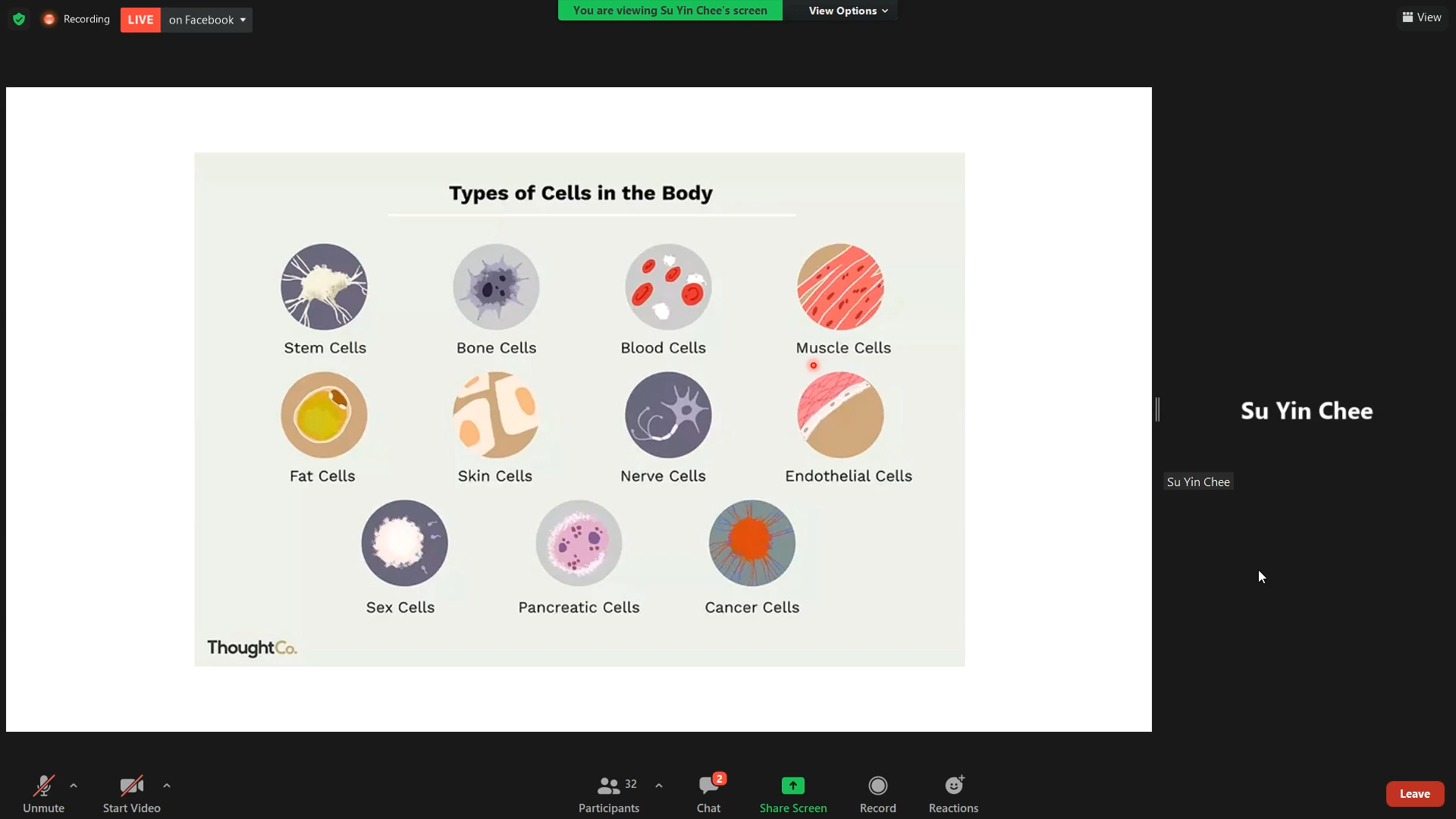
![]()

The e-KLESF 2021 webinars titled “Dr Who – DNA and cancer” and “Material “R”
Us” were held on 29 October 2021 via Zoom and Facebook Live. The invited
speakers were Universiti Sains Malaysia (USM) Assoc Prof Institute for
Research in Molecular Medicine Dr Oon Chern Ein, USM Centre of Marine and
Coastal Studies senior lecturer Dr Chee Su Yin and USM School of Materials
and Mineral Resources Engineering senior lecturer Ts Dr Yanny Marliana Baba
Ismail. The speakers were from
the Young Scientists Network, Academy Science Malaysia (YSN-ASM).
Dr Oon and DrChee started the webinar “Dr Who – DNA and cancer” with the aim
to raise awareness and educate the public on the basics of DNA and cancer.
In their sharing, they shared types of cells in the body; what is DNA; DNA
Mutation; what is cancer; the comparison of normal cells and cancer cells;
characteristics of cancerous cells and many more.
Dr Chee explained what is DNA to participants, “DNA, or deoxyribonucleic
acid, is the hereditary material in humans and almost all other organisms.
Nearly every cell in a person’s body has the same DNA. The information in
DNA is stored as a code made up of four chemical bases: adenine (A), guanine
(G), cytosine (C), and thymine (T). Human DNA consists of about three
billion bases, and more than 99 per cent of those bases are the same in all
people. DNA bases pair up with each other, A with T and C with G to form
units called base pairs.”


Dr Chee explaining the types of cells and DNA to the participants
Dr Oon said, “Cancer happens when abnormal cells divide in an uncontrolled
way. Cancer is the number two killer in the world after cardio disease. In
Malaysia and also globally, breast cancer is the number one cancer that is
mostly diagnosed in women, while the number one cancer in men is lung
cancer.”


Dr Oon showing participants the mutation of cancerous cells
On the other hand, Dr Yanny enlightened participants on the topic “Material
“R” Us”. Her webinar aimed to highlight the importance of nanomaterials and
their applications as well as introduce different groups of materials and
their properties.
During the talk, she shared materials from the basic group of materials and
their properties, advanced materials and the superpower of nanomaterials and
their impact in our daily lives, particularly in health and well-being, and
technology and environment.

Dr Yanny introducing different groups of materials and their properties to
participants
Dr Yanny said, “Material R us means material. Human is one of the biggest
living materials on earth besides dinosaur, giraffe, elephant, blue whale,
ostrich and giant sequoia. Materials can be natural or man-made; for basic
materials, we have wood, plastic, metal, fine sand, ceramic, polymer and so
on while advanced materials are known as nanomaterial.”
“Nanomaterial plays an important role in our daily lives. Their size makes
them extremely useful in electronics, and they can also be used in
environmental remediation or clean-up to bind with and neutralise toxins. It
was used to assist with cleaning the environment and even provide efficient
energy solutions, such as nanomaterial-based solar cells. Nanomaterial can
also be added to cement, cloth and other materials to make them stronger,”
she added.

Speakers and participants after the webinar
The talk concluded with an extensive yet insightful Q&A session, followed by
a photo-taking session.
Wholly owned by UTAR Education Foundation (200201010564(578227-M)) LEGAL STATEMENT TERM OF USAGE PRIVACY NOTICE